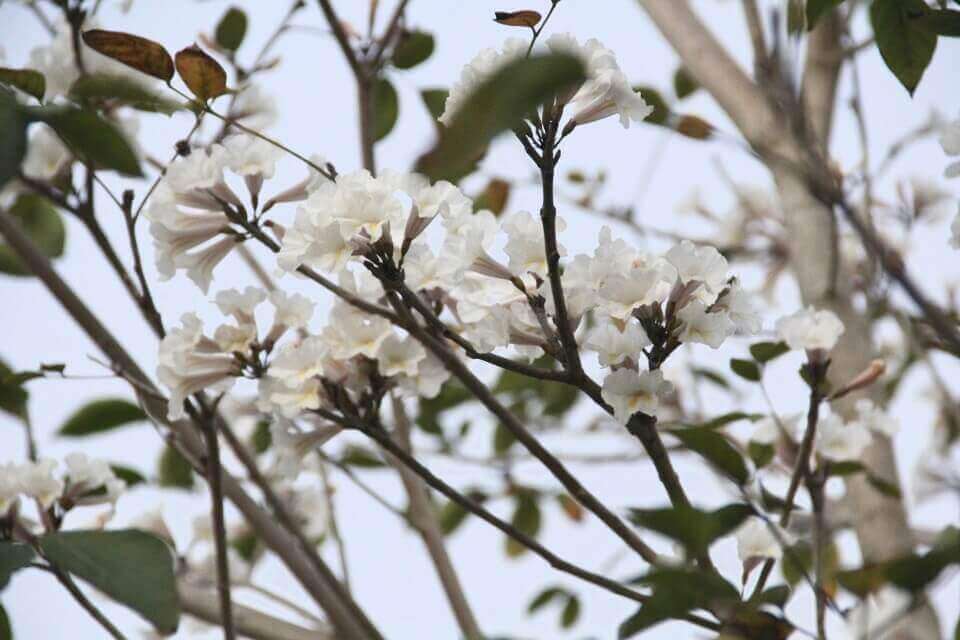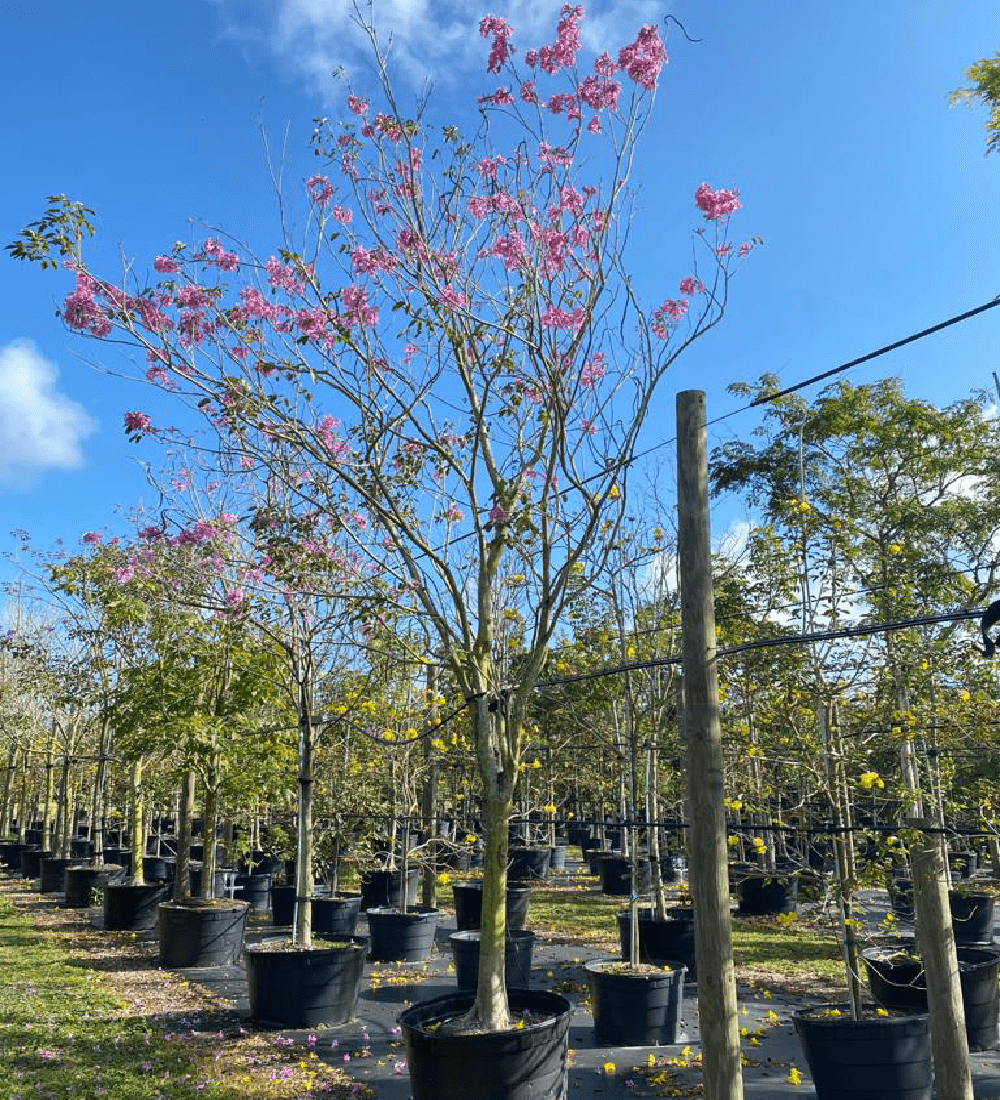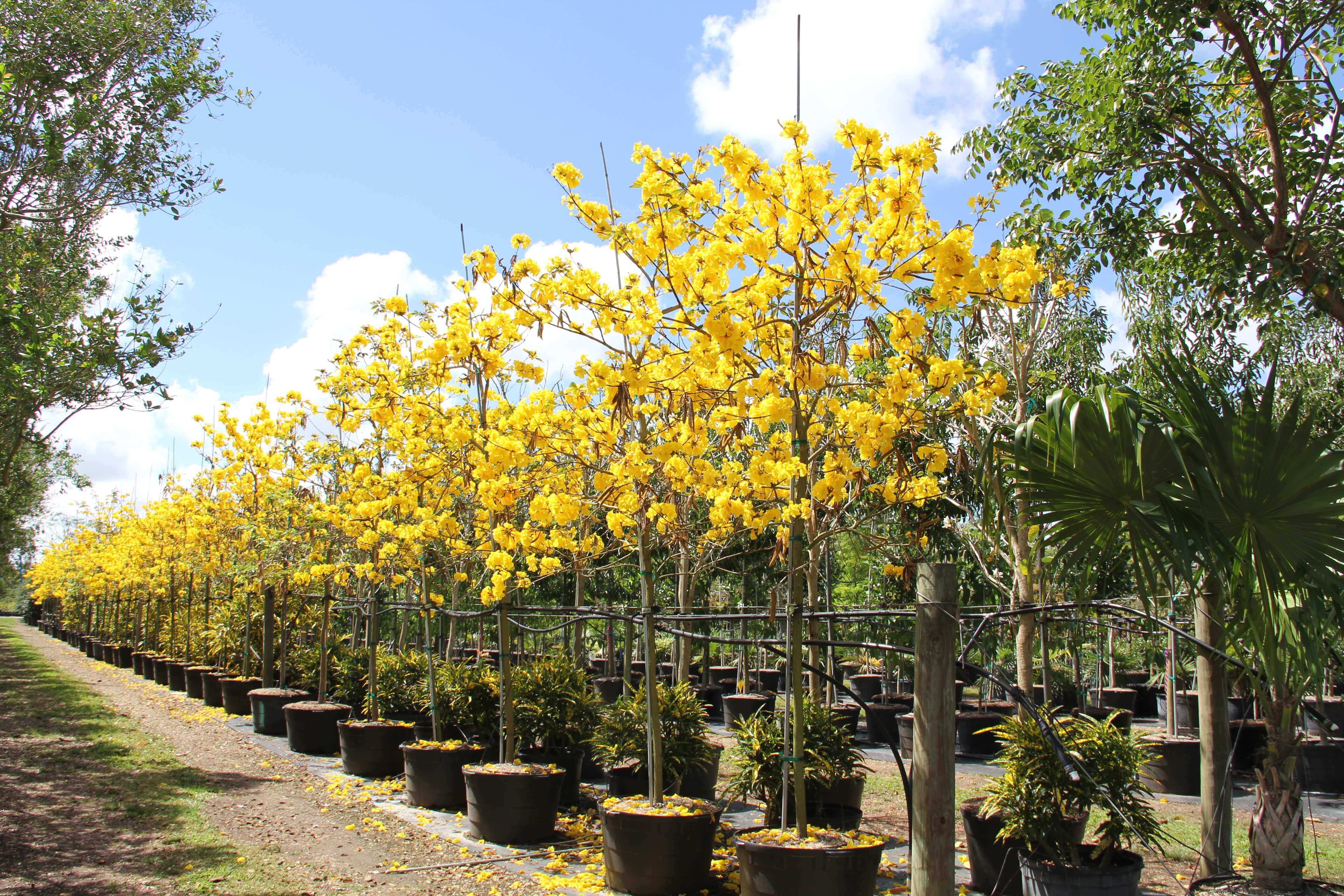An ultimate gardener’s favorite – Tabebuia – blooms in the local landscapes. People passing by these trees generally get confused as to which kind of tree it is. Pink or yellow, they are the trumpet trees in South Florida. But what are the characteristics of Tabebuia tree you ask?
The Tabebuia Tree Characteristic
It is a flowering tree that develops into a medium to small size native to South and Central America and the West Indies. The interesting thing about the genus Tabebuia (Handroanthus) is that 100 types of trees come under it. Most are smaller in size that grows up to 25 feet (7.5m.) or even less while some grow a bit taller up to 16- feet (49 m.). When we say, “trumpet trees”, it refers to the blooms of the tree that are tubular and frilled on the top with several stamens.
In addition, you’ll come across the names “tree of old” or “seed pods” that point towards the varieties of golden flowers. During the cold season, the flowers dangle in the winter interest. In the warmer areas, it’s easy to look after the Trumpet tree.
As, once the tree flowers, it leaves a lot of seeds, hence the name seed pods. The different species of Tabebuia tree never fails to please the viewers. Regardless of the color variation, these trees in south Florida grow perfectly under full sun. And besides, another fact that its amazing features is that the tree is drought-tolerant tree. So, even during dry times, these trees grow every week or two.
Tabebuia Tree Care Tips
The Tabebuia tree is tolerant of a variety of soils, so where you grow it must comprise a warm area with little to no cooling possibility. Even though these are drought tolerant as well, consider having fertile soil with good draining capacity. Clay, sand, loam, or any soil pH will do too when it comes to meeting the growth conditions of the Trumpet tree. It has the ability to adapt to an extreme to little sun locations. Overall, you may not really need to worry about where and how to grow it.
How Do You Care for a Tabebuia Tree?
Moving forward into important aspects of Tabebuia tree care, here we have two things – shaping the deadwood and old stems. In warmer climates such as in Brazil, establishing Handroanthus trees (Ipe wood) as timber produces an essential commercial product. Instead of giving chemical treatments to the deck woods, the plant-Handroanthus- is used as it has properties that are disease and pest resistant, and useful to carry over to the timber.
All-in-all, the trumpet trees are attractive and adjust well to almost any growing conditions.
Availability of Tabebuia on TreeWorld
Although the Trumpettrees in south Florida are not always easy to find, having them in your landscape is worth the effort. Saving you from the hassle, we have several options with us for you to choose from. Choose your favorite:
- Bahamensis (white tab)
- Tebebuia Caraiba (Yellow Trumpet)
- Tebebuia Chysotricha (Golden Trumpet)
- Donnell-smithii (Primavera tree)
- Tebebuia Guayacan,
- Tebebuia Heterophylla (Pink Trumpet)
- Tebebuia Impetiginosa (Purple Trumpet)
- Chrysanta (Aranguaney)
- Tebebuia Roseoalba (White Ipe)
All available at Treeworld Wholesale. Pick the choice that suits your property the most.





